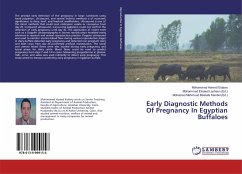The prompt early detection of the pregnancy in large ruminants using hand palpation, ultrasound, and several indirect methods is of economic significance to dairy, beef, and livestock smallholders. Ultrasound is one of the direct methods that could scan embryonic vesicle or conceptus from day 20. Compared ultrasound, trans-rectal palpation could not confirm the detection of early pregnancy until day 45. The application of recent tools such as a Doppler ultrasonography in bovine reproduction heralded many advances in research and animal reproduction practice. Doppler ultrasound was used to monitor uterine blood flow during various reproductive stages in dairy buffalo detected early pregnancy and detected non-pregnant dairy and beef cows from day 20 post-timed artificial insemination. The luteal and uterine blood flows were also studied during early pregnancy and luteal phase for dairy cattle. Blood flows could be used to predict pregnancy from days 7 and 14 in cows. Measuring progesterone in plasma, milk, urine, and saliva was used indirectly to detect early pregnancy. This study aimed to measure predicting early pregnancy in Egyptian buffalo.
Bitte wählen Sie Ihr Anliegen aus.
Rechnungen
Retourenschein anfordern
Bestellstatus
Storno








